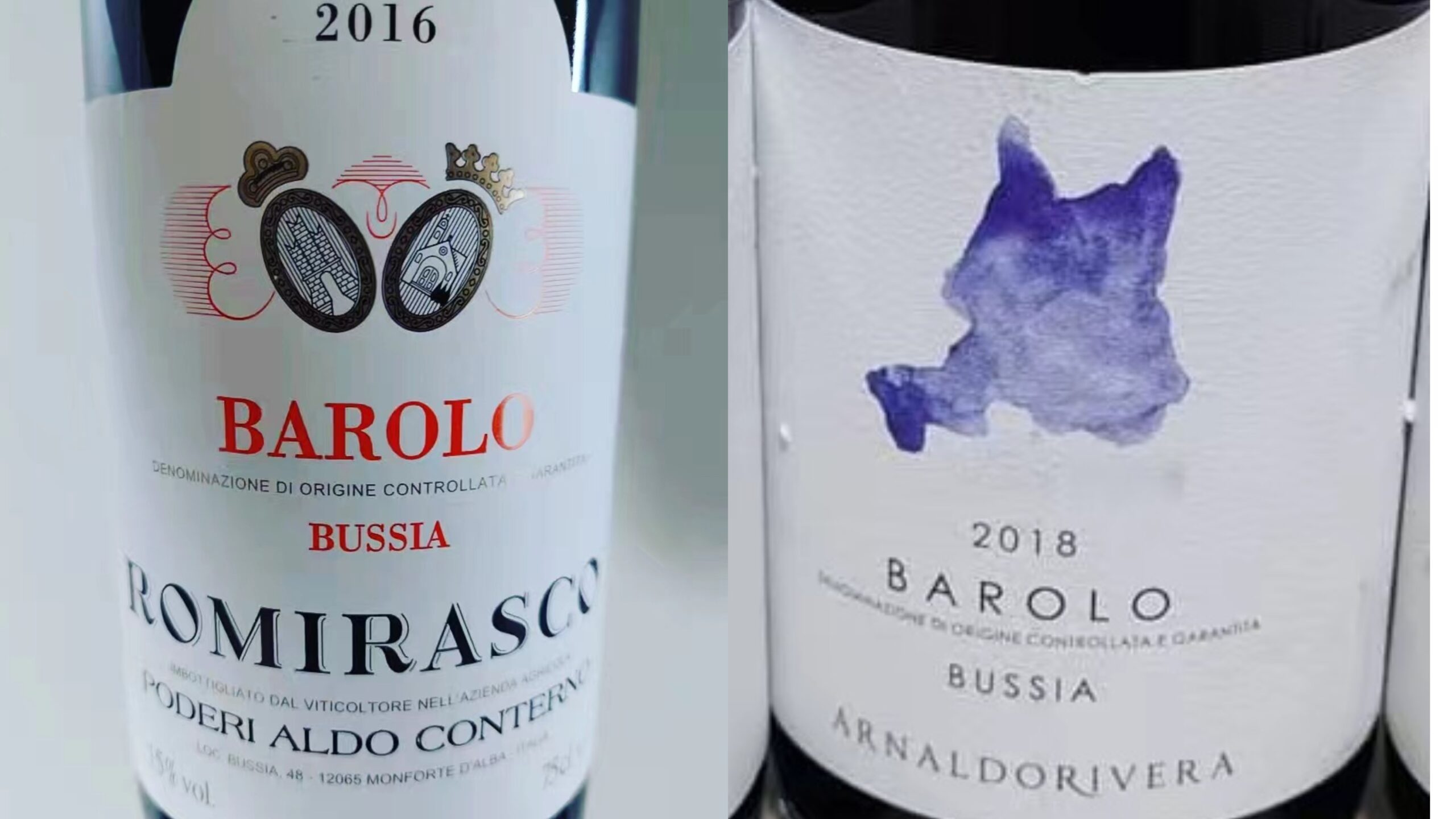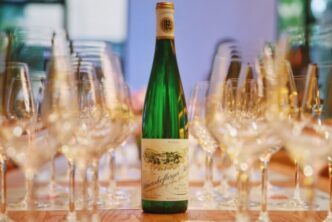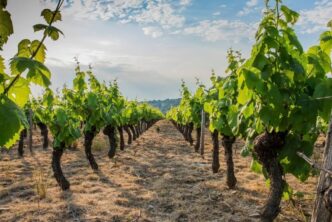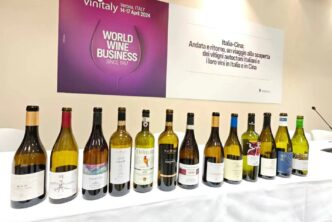本文中,达加塔大师将一个巴罗洛名园细分再细分,让读者体会到这一美酒产区有着和勃艮第一样精妙复杂的风土。但在未来官方更细分的认证出现前,现在只能跟着行家里手收集更多的信息,品鉴买酒时做出更明智的判断。
谈及巴罗洛,你可以说Bussia是巴罗洛的五大葡萄园之一。只是,要立即想出一个能代表Bussia的巴罗洛酒款倒是真的有点难,有的是这一个非常大葡萄园所能有的许多不同代表。
MGA:巴罗洛的单一园,还是葡萄“园区”
巴罗洛与勃艮第有很像的地方,都是由大大小小、名气高低各异的葡萄园拼凑而成。虽然这些葡萄园在过去被称为单一园(crus),当地老一辈人也仍然这样称呼,但事实上,巴罗洛官方划定的葡萄园面积很多时候都太大了,和我们感觉上的单一园相比,不如说是葡萄“园区”。
这些葡萄园区在2010年正式划定命名,所以现在我们有170个巴罗洛葡萄园区可供选择。Bussia、Castello、Vignarionda和Villero就是巴罗洛这170个葡萄园区中的一部分,在意大利语中被称为Menzioni Geografiche Aggiuntive(简称MGA),也叫做”附加地理标识”。换句话说,这些园区名字是对巴罗洛这个词的”额外补充”。
就巴罗洛葡萄酒的标识来说,可以有几种形式:
1.本文提到的Barolo Bussia,用Bussia MGA葡萄园区种植的葡萄酿造的巴罗洛。
2.只标有Barolo的酒,用来自巴罗洛地区11个村庄任意地区葡萄酿造的酒.
3.来自11个村庄其中之一的酒,例如Barolo del Comune di Novello或Barolo del Comune di Verduno。
很明显,在品鉴会和晚宴上,那些在酒标上标有葡萄园区名称的酒,比如说Bussia,才是让酒客特别激动的,价格也更高,更值得炫耀。
Bussia其园
Bussia是一个神奇的名字,也是一些神奇巴罗洛葡萄酒的来源之处。Bussia是第一个出现在与巴罗洛相关酒标上的葡萄园名字,由Beppe Colla在1961年的酒标上标注(同年还有Vietti的巴罗洛Rocche,今天的Rocche di Castiglione一起)。
但是,正如我多次提到,300公顷(上下)的面积,现代Bussia的化身实在是太大了。从Pugnane的山上延伸到Sant’Eligio小村,四公里多长,海拔高度的落差高达250米,此间差别诸位可以想象一下。
支持者们指出,这一地区在地质和土壤方面有相似之处,但这确实是在通过非常玫瑰色的眼镜(西方谚语,表示过于乐观、近幼稚)来看待这一问题。因此,与其搬出Gertrude Stein那句同样神奇的名言:”那里没有“那里”(There is no there, there。出处是20世纪30年代当她重回美国加州时,发现自己童年时代的老房子、学校、公园全部不复存在,因此有感而发,引申义可为:没有这回事)。
我认为今天看待Bussia的正确方式可以是:那里有太多“那里”。
300公顷的Bussia确实太大,不可能被看作是一个单一园,或一个有特定形象的东西,在某种程度上支撑起Bussia葡萄酒的形象。勃艮第香波村的慕斯妮(Musigny)特级园,面积仅约为11公顷,其实村里所有特级园的面积加起来也才60公顷。
显然,300公顷,不仅是Bussia,任何这种规模的葡萄园都无法在平均品质水平上与慕斯妮这样级别的葡萄园在品质上匹敌、甚至相似。
细分Bussia
今天,Bussia园区拥有:来自不同方向的风(南、西南、东南、东、西,我可能还忘了一些);220米到460米的海拔跨度以及不同的斜坡坡度;不同的岩石特性(至少有两种不同类型的圣阿加莎化石岩层,沙质和典型;加上迪亚诺砂岩);不同的微尺度和中尺度气候。
这也不奇怪,整个Bussia园区被分类中分属三个不同的土地单元:Barolo、La Morra和Novello。所以,Bussia的风土是如此多样,酿出的葡萄酒也是相当多样(关于什么是土地单元?和它们具体的岩石特性。这里卖个关子,我的新书《Barolo Terroir: Grapes Crus People Places》中有完整呈现)。
虽然在所有用Bussia园区的葡萄酿制的巴罗洛中可以找到一点风格上的相似之处,即极强的单宁支撑上那种丝滑和轻盈的感觉,但这些来自这个广大葡萄园区的葡萄酒确实有着很大的不同。在我看来,从北到南,Bussia葡萄园区至少可以分成十个不同的部分,或者换句话说,从Castiglione Falletto镇到Monforte镇:
Pugnane
Bussia Sottana
Munie
Rocche di Monforte(以前是Rocche或Rocche di Bussia)
Bussia Soprana
Mondoca
Dardi
Pianpolvere和Pianpolvere Soprano
Visette、Arnulfo和Fantini
Corsini
其中地位超然的显然是Bussia Soprana部分,无可比拟的Aldo Conterno酒庄酿造的伟大葡萄酒奠定了其地位。
地位超然的Bussia Soprana及再细分
Bussia Soprana部分在Bussia Sottana南面,在其西南面的Dardi和东南面的Pianopolvere/Pianpolvere Soprano等子产区之上。它的西边是另一个葡萄园Monrobiolo di Bussia,东边是Perno和Gramolere的Monforte葡萄园区。
正是在BussiaSoprana的范围内,有着著名的Colonnello、Cicala和Romirasco等更小的巴罗洛名园。
另一个名园是Gabutti,但不要把这个Bussia里的小葡萄园与Serralunga村的Gabutti大园区混淆。
每个名园的特点上,Colonello有着十分轻盈、芬芳的酒,Cicala的巴罗洛酒体更大,Romirasco的葡萄酒是两者的理想结合,也是尤为复杂的,Gabutti的葡萄酒肉质丰满,纹理清晰,相比Cicala,可能风格更像Colonnello或Romirasco。
Bussia的另一面:Visette-Arnulfo-Fantini
相比之下,Visette、Arnulfo和Fantini呈现出完全不同的Bussia:这三个区域呈带状排列,从西到东彼此相邻。虽然有些人认为这三个地区可以混为一谈,但我从不这样认为。多年来,我一次又一次地,即使在盲品的情况下,来自Visette的巴罗洛和来自Fantini的巴罗洛,我也有90%的可能将它们区分开来,所以这肯定不是我在故布疑阵。
Bussia Soprana又和Visette/Arnulfo/Fantini这些区域之间的地形、气候甚至地质都不同。大多数情况下,Visette/Arnulfo/Fantini的巴罗洛相对新鲜、充满活力。
本文我将谈到的酒庄,Aldo Conterno的barolo全部来自Bussia Soprana;另一家Arnaldo Rivera酒庄酿造的Barolo Bussia,其葡萄来自Fantini以及Bussia Soprana这两个地方。
Fantini的葡萄藤位于高海拔地区,酿的酒也是相当有矿物光泽,很硬。
如果想要更精确,Fantini可以进一步细分为Fantini-per和Sant’Eligio(或Fonte Sant’Eligio)。这两地基本上都是面西南的圆形山丘,只被一个森林覆盖的丘陵山峰隔开,虽不完全相同,但这两个分区的海拔高度相似,分别为380-390米和430-440米。再加上相似的土壤岩性,目前可以只算做一个。
在未来,如果有酒庄用这两个地区的葡萄分别单独酿酒并贴标,届时我们或许能够把Visette-Arnulfo-Fantini这个还是挺大的Bussia子区域进一步分解为更多合乎逻辑的独立个体。但现在还没到这个阶段。
目前,在将Fantini视为Visette-Arnulfo-Fantini子区域里的一个子区域时,重要的是要知道它不仅仅因为海拔高度而不同,还因为沙土地块的存在,创造了更好的排水性,也促成了与Pugnane, Bussia Soprana或Munie这些地方非常不同的巴罗洛酒。
Fantini有潜力酿造出世界级的巴罗洛,我认为将这里单独分开会很好。但目前的现实,我无法改变。
但至少现在读者们有了更多信息,可以据此做出更好的品酒决定。
这篇浅文中将只选择两款来自Bussia的巴罗洛葡萄酒做代表,更完整的巴罗洛产区报告敬请期待!
两酒对比
Aldo Conterno 2016 Barolo Bussia Romirasco 95+
明亮的中等到深宝石红色。紫罗兰和深红樱桃的香气,醒酒后加上细微的迷迭香和雪松带着精致的薄荷味,并因樱桃酒风味的出现而变得复杂。入口后口感宽阔,有矿物感,在中段紧密而集中,漫长的余韵中,有丰富、辛辣的深色水果、香醋油、皮革和檀香木风味。单宁没有粗糙的边缘,但随着空气进入变得更明显,最后以不断累积,值得注意且高贵的抓力收尾。与酒庄来自Cicala和Colonnello园的酒相比,在大斯洛文尼亚酒桶中的陈酿时间长了三个月,这是一款美丽的酒,但需要耐心等待。窖藏起来,8到10年内都不要想着打开。适饮窗口:2030-2045。
Arnaldo Rivera 2018 Barolo Bussia 93
红宝石色。富有表现力、甜美、艳丽的樱桃、紫罗兰、石榴、异国木材、杏和牛奶巧克力的香气。果香浓郁、坚实、成熟,有天鹅绒般的口感,很多细微且明确的风味,带有矿物感的紫罗兰、李子和红色浆果味道。收尾悠长而成熟,有很好的能量和提升感。现在已经充满了年轻的吸引力,陈年将更好。这是Terre del Barolo合作社新酿出的一款令人兴奋的葡萄酒,属于高端Arnaldo Rivera单一巴罗洛园系列。这款Barolo Bussia由区域内三个葡萄园混合而成,一个在Bussia Soprana的Gabutti,另外两个在Fantini和Sant’Eligio。葡萄藤种下的时间在Sant’Eligio是1969年, Gabutti是2002年, Fantini是2003年。Sant’Eligio葡萄园位于Monforte山脊的西侧,拥有良好的砂岩,具有很好的保水能力,这意味着生长在这些地区的葡萄藤可以很好地忍受干旱。这款酒浸渍、发酵了十七到十九天,在五百和七百升的法国大橡木桶中陈酿。适饮窗口:2026-2040。

 English
English





Ian,
Enjoyed reading this excerpt from the forthcoming book, which sounds like it will be encyclopedic in nature, tackling some of the most complicated terroir in the world. It’s fascinating to me that there can be such different expressions of the same grape from vineyards that are relatively close in distance. But that’s a big part of the fun in studying wine, right? As noted, the identification of the climatic and geologic variation of the Barolo region and a study of the different expressions of wine produced are a worthy pursuit for any fan of Barolo. Thanks to you and Michele Longo for undertaking this task.
I think that trying to pick where a wine is from is always fun. Is this we are tasting blind a Pinot Noir from Gevrey, Oregon or New Zeland? And on amore finite scale, is this a Barolo from Vignarionda or Lazzarito, or a Riesling from the Kirchenstuck ornthe Jesuitengarten of Forst? If it gets to granular and it stops being fun, but to a certain extent that sort of search adds to the fun that is wine.
Barolo, like Riesling in the Mosel , Rheingau, Pfalz etc..and Pinot Noir/Chardonnay in Burgundy have a bevy of different famous vineyard areas that give very different wines. based on variables such as soil type, geology, climate, exposure,ltopography…and even though the wines might be made in the same way just 200 feet part they end up being very different because of the interplay of all those vaiables.
The new book on Barolo addresses some of thos issues but it’s alot more than just a search for terroir in the glass. We have probably the most detailed history on barolo and for sure the most detailed description of Nebbiolo grapes (all the clones and biotypes). In the end parts of the book will appeal to some wine lovers, other parts of the book will be just what others were looking for. In the end, I hope it has something for everyone. Cheers!
A cat snippet from a no doubt sanspareil book that I couldn’t wait to put my hands on…
And the timing is perfect, I just got named Maestro with the task of creating a delegation of KOA here in Montreal. We are hitting the ground running on November 17th 2022 with white truffles and 1999 double magnums of Ceretto Brunate coming from the producer cellar (who said that education has to be boring). Ian we will fly you over to our chapter in 2023 to enlighten us, I have got the name but you are the REAL Maestro. In Vino Veritas!
Looking forward to such a great trip and honoured by the invitation. In the meantime, congratulations on your achievement! Ian